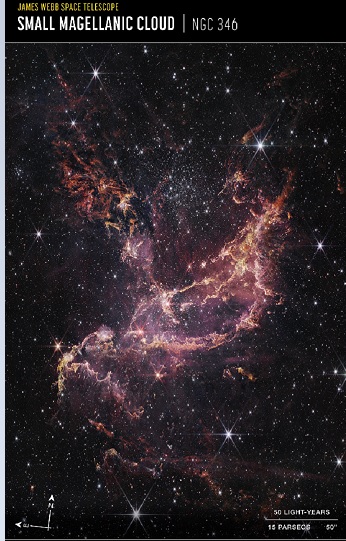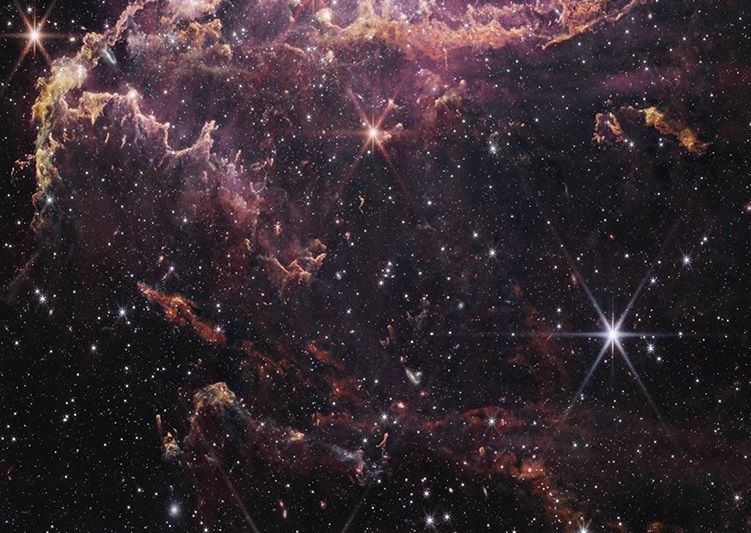By peering into a well-known star cluster within the Small Magellanic Cloud, Webb’s NIRCam instrument has revealed many new pockets of star formation
By peering into a well-known star cluster within the Small Magellanic Cloud, Webb’s NIRCam instrument has revealed many new pockets of star formation that have never been seen, informed webbtelescope.org.
Further, new structures appear in this image that provide a window into the stars feeding within.
NGC 346, one of the most dynamic star-forming regions in nearby galaxies, is full of mystery. Now, it is less mysterious with new findings from NASA’s James Webb Space Telescope, reports webbtelescope.org.
NCG 346 is located in the Small Magellanic Cloud -SMC-, a dwarf galaxy close to our Milky Way. The SMC contains lower concentrations of elements heavier than hydrogen or helium, which astronomers call metals, compared to the Milky Way.

Since dust grains in space are composed mostly of metals, scientists expected there would be low amounts of dust, and that it would be hard to detect. New data from Webb reveals the opposite, reports webbtelescope.org.
Astronomers probed this region because the conditions and amount of metals within the SMC resemble those seen in galaxies billions of years ago, during an era in the universe known as “cosmic noon,” when star formation was at its peak. Some 2 to 3 billion years after the big bang, galaxies were forming stars at a furious rate. The fireworks of star formation happening then still shape the galaxies we see around us today.
“A galaxy during cosmic noon wouldn’t have one NGC 346 like the Small Magellanic Cloud does; it would have thousands” of star-forming regions like this one, said Margaret Meixner, an astronomer at the Universities Space Research Association and principal investigator of the research team.
“But even if NGC 346 is now the one and only massive cluster furiously forming stars in its galaxy, it offers us a great opportunity to probe conditions that were in place at cosmic noon”, said Meixner.
“We’re seeing the building blocks, not only of stars, but also potentially of planets,” said Guido De Marchi of the European Space Agency, a co-investigator on the research team. “And since the Small Magellanic Cloud has a similar environment to galaxies during cosmic noon, it’s possible that rocky planets could have formed earlier in the universe than we might have thought”, reported webbtelescope.org

The James Webb Space Telescope is the world’s premier space science observatory. Webb will solve mysteries in our solar system, look beyond to distant worlds around other stars, and probe the mysterious structures and origins of our universe and our place in it.
Webb is an international program led by NASA with its partners, ESA (European Space Agency) and the Canadian Space Agency.
All Credit to: https://webbtelescope.org/


